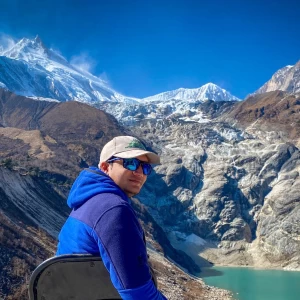Trek Peaks of Nepal with Himalayan Scenery Treks and get your summit record to next level.
7 Trekking Peaks In Nepal for Beginners
Table of Contents
Nepal is a paradise for any mountain lovers with lots of mountains. For the Trekking Peak, Nepal is a dream destination. It has much to offer, even for beginners.
Climbing your first Himalayan peak is thrilling as it brings a sense of achievement.
The journey takes you through stunning landscapes of the 8000-ers. One can encounter the culture of ethnic groups like Sherpas, and Gurung Community.
For beginners, trekking peaks in Nepal are an accessible way to start your mountaineering journey.
It provides a taste of high-altitude Peak Climbing without the need for advanced technical skills.
This article focuses on the best trekking peaks in Nepal for beginners. These peaks are chosen for their relative ease and the rewarding experience for novice climbers.
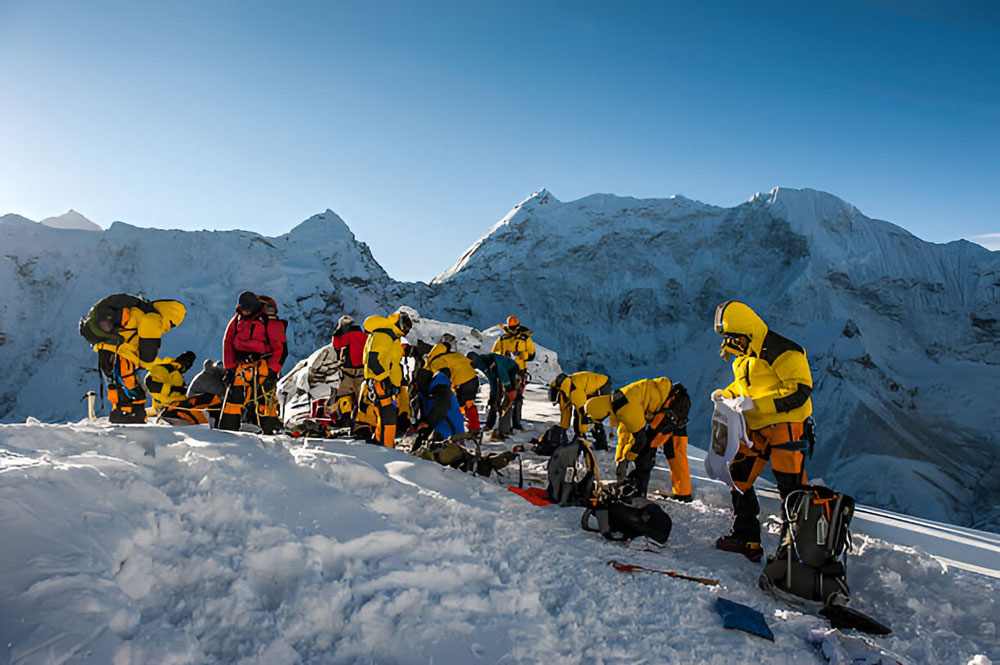
Why Nepal is Perfect for Beginner Mountaineers
Nepal is a country known for the majestic Himalayas, diverse Landscapes, and unique cultural experiences. It is also a beginner-friendly destination for climbing trekking peaks.
Mountain Peaks like Yala Peak and Dhampus Peak are the best options for anyone planning to begin mountaineering.
Some of the reasons why Nepal is a perfect destination for beginner mountaineers are explained below:
Diverse Range of Peaks for All Skill Levels
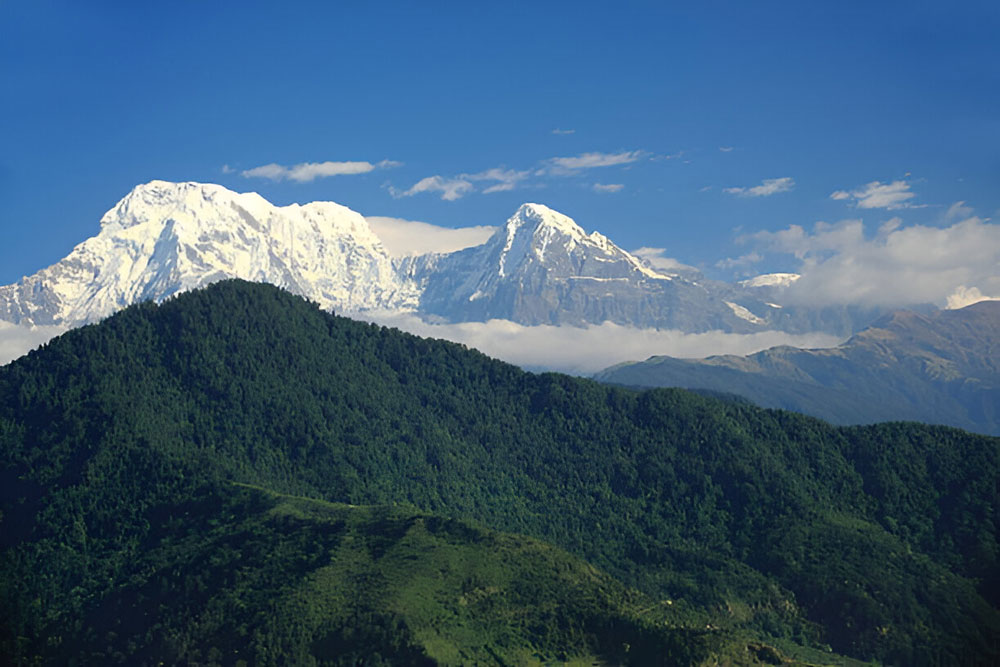
Nepal offers a diverse range of trekking peaks, making it an ideal destination for every climber.
There are over 30 officially designated trekking peaks in Nepal. These peaks, ranging from 5,500 to 6,500 meters, present a challenging yet achievable adventure.
There are some Peaks like Pisang Peak and Yala Peak where climbers don’t need advanced skills or specialized equipment. These peaks are specially designed for people who are new to mountaineering.
Anyone with good fitness and determination can conquer these beginner-friendly peaks.
Supportive Infrastructure and Experienced Guides
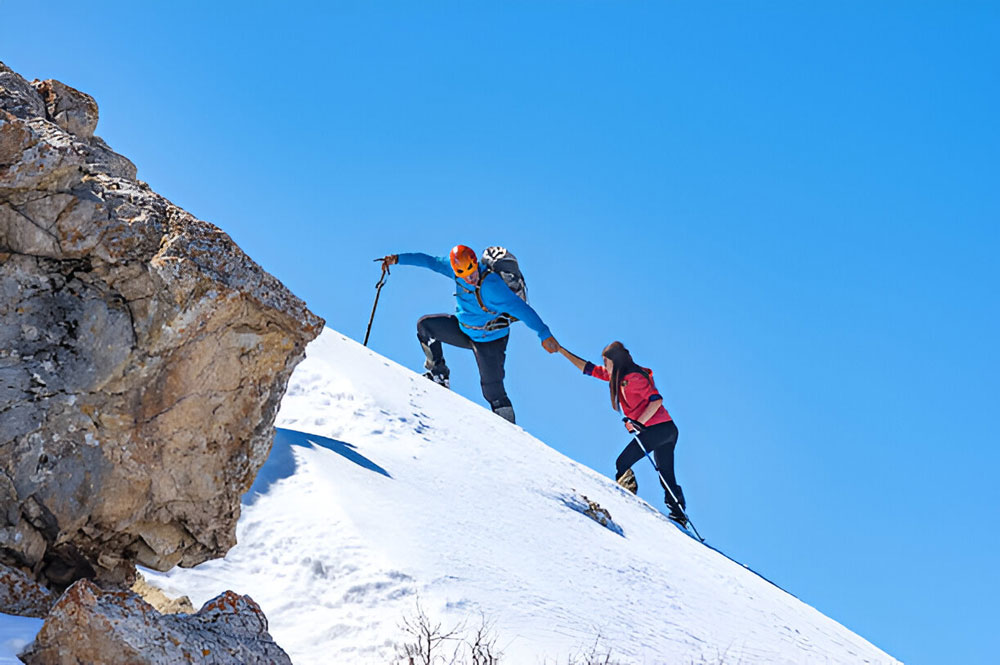
Nepal's extensive trekking infrastructure makes it an ideal destination for Peak Climbing Treks.
There are well-marked routes, numerous teahouses, and reliable support services. These services facilitate beginner climbers to help them reach their summit.
The country is home to highly experienced guides and climbing Sherpas. The Sherpas have successfully summited peaks like Everest multiple times.
These experts ensure your safety and guide you through the challenges of high-altitude trekking.
Cultural Enrichment Alongside Climbing
A unique aspect of climbing in Nepal is the chance to immerse yourself in the rich local culture.
You'll have a chance to interact with local communities as you pass by the high-altitude settlements alongside the popular trekking peaks. You can learn about the Sherpa and Gurung communities' way of life in the Himalayas during the trek.
Experiencing the hospitality of the Nepalese people will make your trip not a culturally enriching journey.
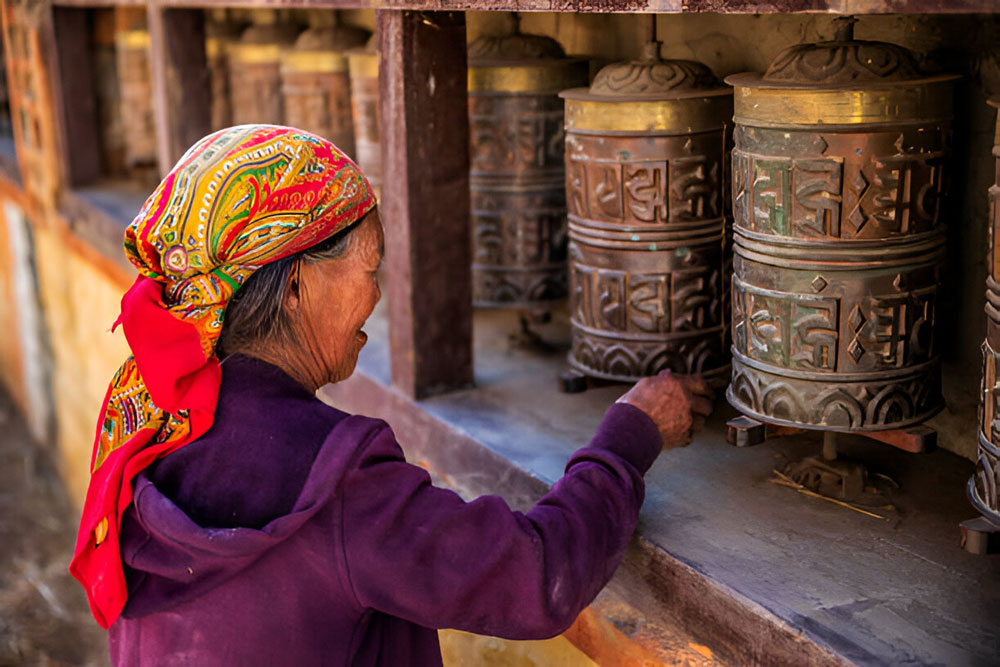
The 7 Best Trekking Peaks for Beginners in Nepal
For new mountaineers, Nepal has some accessible, rewarding trekking peaks.
Here are seven of the best trekking peaks for beginners. Each offers a unique experience and stunning views of the Himalayas.
Eastern Peak Climbing in Nepal
Here, we will discuss the peaks of the Eastern part of Nepal for beginners.
Mera Peak Climb
Mera Peak, standing at 6,476 m, is the highest trekking peak in Nepal. It is very accessible for beginners due to its non-technical nature. Situated in the Everest region, it is the most popular trekking peak in Nepal among beginners.
The journey to the summit of the highest trekking peak in Nepal takes you through the diverse landscapes of the Himalayas. You can experience lush rhododendron forests to high-altitude glaciers, throughout the trek.
The final ascent is on snow-covered slopes. You may need crampons and an ice axe to climb the peak. However, the climb itself is non-technical, making it accessible to novice climbers.
One of the highlights of climbing Mera Peak is the panoramic view from the summit. On a clear day, you can see five of the world’s highest peaks, including Mount Everest, Lhotse, and Makalu.

Island Peak Climb
Island Peak, or Imja Tse, is a popular choice for novice climbers in the Everest region. It offers a more technical challenge in the Khumbu region.
At 6,189 meters, it’s slightly lower than Mera Peak but offers a more technical climbing experience.
The approach to the peak takes you through the heart of the Khumbu Valley. The trail passes iconic landmarks like Tengboche Monastery and Dingboche Village.
The climb to the summit of Island Peak involves crossing a glacier and ascending steep slopes.
The climb is harder than Mera Peak. But, it's still doable for beginners with basic mountaineering skills.
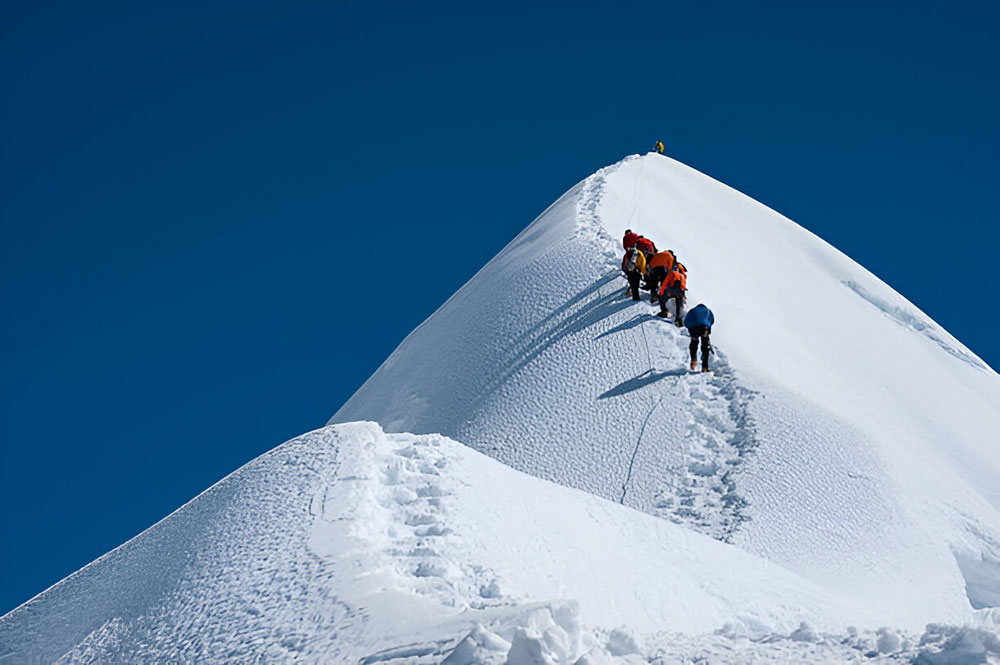
Lobuche East Peak Climbing
At 6,119 meters, Lobuche East Peak is a great choice for novice climbers. It offers stunning views of the Khumbu Valley.
Lobuche East, near Everest Base Camp, offers a mix of trekking and climbing. Its route goes through the scenic Khumbu Valley.
The climb is non-technical. However, it requires good fitness and acclimatization due to the high altitude.
The route to Lobuche East passes through scenic villages, like Namche and Dingboche.
The climb to the summit is gradual, with a final steep push to the top. The summit offers a breathtaking view. It has panoramic vistas of Everest, Lhotse, Pumori, and the surrounding mountain peaks.
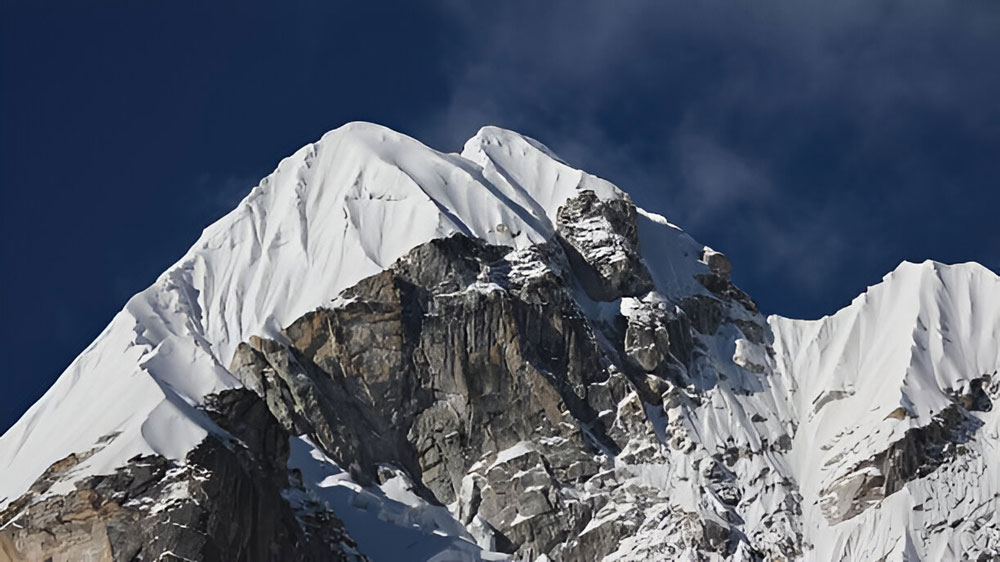
Western Peak Climbing in Nepal
Here we will discuss the western peaks from Kathmandu for beginners.
Summit Yala Peak
Yala Peak is one of the most accessible trekking peaks in Nepal. Yala Peak is in the Langtang region.
It is close to Kathmandu and has a short trek inside the Langtang Valley. It's a non-technical climb, ideal for beginners in the Langtang National Park.
The climb to Yala Peak's summit (5,732 meters) is easy. There are no technical sections. The route involves rocky paths and snow-covered slopes. But, the ascents are gradually steep.
The summit offers a view of Langtang Lirung, Ganesh Himal, and Shishapangma in Tibet.
Chulu Peak (East Peak and West Peak)

Chulu Peak provides two distinct climbing experiences in the Annapurna region. The trek caters to beginners with varying levels of technical expertise.
This trekking peak in the Annapurna region has two options: Chulu East (6,584 m) and Chulu West (6,419 m).
Both mountain peaks are good for beginners. But, Chulu East is tougher due to its higher altitude. However, both of these expedition peaks are considered one of the most difficult trekking peaks in Nepal.
The trek to the base camp takes you through the Manang Valley. After entering the Manag Valley you can enjoy scenic views of the Annapurna range.
Chulu East is a more technical climb. It has a steep climbing that requires crampons and an ice axe.
Chulu West, on the other hand, is less technical and offers a more straightforward climb.
Both peaks offer stunning summit views, including the Annapurna, Dhaulagiri, and Manaslu ranges.
Beginners can choose between Chulu East and West or do both twin peaks. It depends on their experience and comfort with technical climbing.
Dhampus Peak
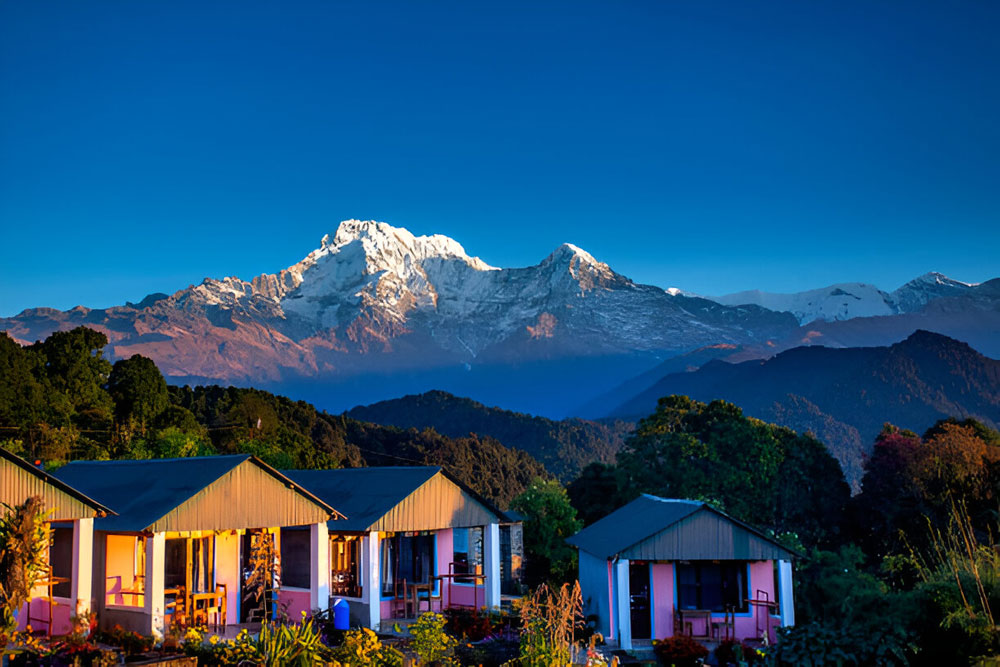
Dhampus Peak, also known as Thapa Peak, stands at 6,012 meters and is one of the easiest trekking peaks in Nepal.
The climb to Dhampus Peak's summit is easy. It has gentle slopes and few technical challenges.
From the summit, you'll see panoramic views of surrounding peaks including Dhaulagiri, Tukuche, and Nilgiri and their valleys.
Dhampus Peak is a great choice for those wanting a less crowded, accessible peak in the Annapurna region.
Tent Peak (Tharpu Chuli)
Tent Peak, also known as Tharpu Chuli, is a manageable climb for beginners, standing at 5,663 meters.
The trek to Tent Peak is in the Annapurna region. It follows the famous Annapurna Base Camp trek.
The climb to the summit is easy. The views from the top are stunning as you can get the perfect view of the Annapurna range and Machapuchhre.
The approach to Tent Peak begins with the classic Annapurna Base Camp trek. The trail takes you through terraced fields, rhododendron forests, and traditional Gurung villages.
While the climb is non-technical, it still offers a sense of adventure and achievement. The summit offers a stunning 360-degree view of the Annapurna massif. It makes for a memorable climb for beginners.
Planning Your First Trekking Peak Climb
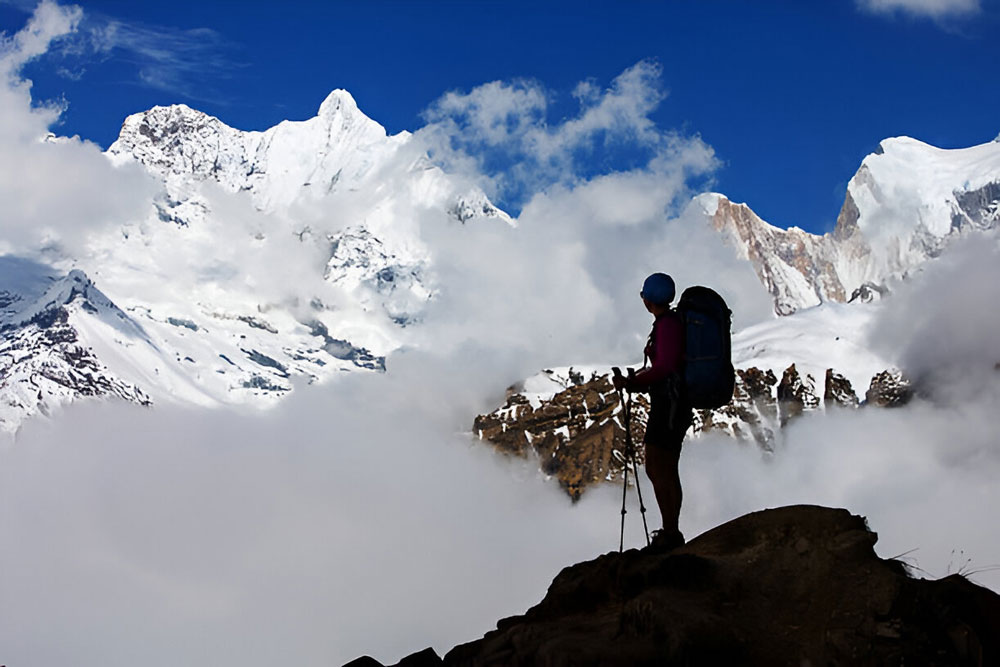
Planning is crucial for novice climbers embarking on their first trekking peak adventure in Nepal.
A well-thought-out plan can make the difference between a successful ascent and a challenging experience.
Proper planning ensures that you’re well-prepared for the physical demands of the climb and the logistical aspects of the trip.
Choosing the Right Peak
Selecting the right trekking peak is crucial for beginners.
As a beginner, you must know the type of challenge you want before choosing the right peak. Choosing the right peak can vary according to your fitness level and your previous trekking or rock climbing experience.
Yala Peak and Dhampus Peak are ideal for a non-technical climb. These are the peaks that require shorter trekking durations.
For climbers ready to push their limits, Mera Peak and Island Peak offer tougher, more technical routes.
Also, consider the time required. Peaks like Mera and Island need longer treks to reach their base camps.
Consulting with experienced guides from Himalayan Scenery Treks and Expedition company is a must. They can help you choose a peak that aligns with your abilities and goals.
Best Time to Climb
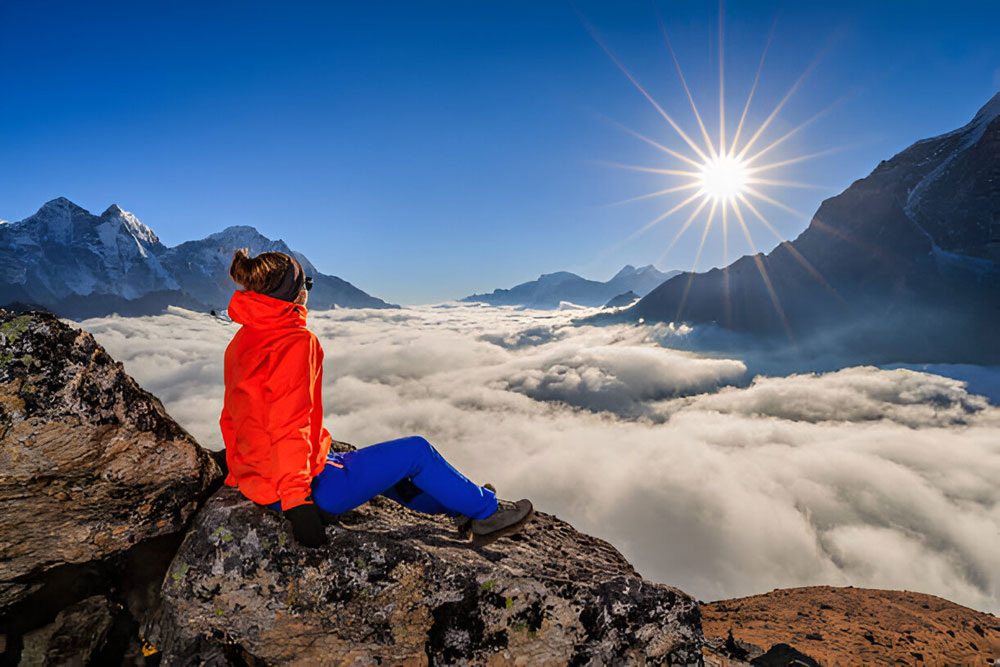
Every trekker should be aware of the timing while climbing any peak in Nepal. If something goes wrong in the Himalayas like bad weather or an avalanche you will be forced to add additional days for your trek. So make sure you plan your peak climbing trek at the right time to avoid any unpleasant situations.
The best seasons for trekking and climbing are pre-monsoon (spring) and post-monsoon (autumn). During these seasons you can experience stable weather and clear views throughout your journey.
Each peak may have an optimal climbing window. So, check the ideal conditions for your chosen peak with Himalayan Scenery Treks.
Understanding Costs
Climbing a trekking peak in Nepal involves several key expenses. Some of them are climbing permits, gear, guide fees, and accommodation fees.
For beginners, a peak climbing trek in Nepal costs a minimum of about $1,200. This covers essential expenses.
Climbing Permit fees vary by peak, for instance, Island Peak and Mera Peak have higher fees due to their popularity.
Most of the trekkers find it difficult to bring equipment from all the way home. So you can plan for equipment rentals, such as crampons, ice axes, and climbing boots in Kathmandu.
Guide and Porter's fees depend on the trekking company and the services they offer. Choose a top company, like Himalayan Scenery Treks. They offer great services at a fair price.
As you climb, accommodation and food costs will rise. So, plan your budget accordingly.
Also, include travel insurance in your budget. It is essential for safety during high-altitude climbs.
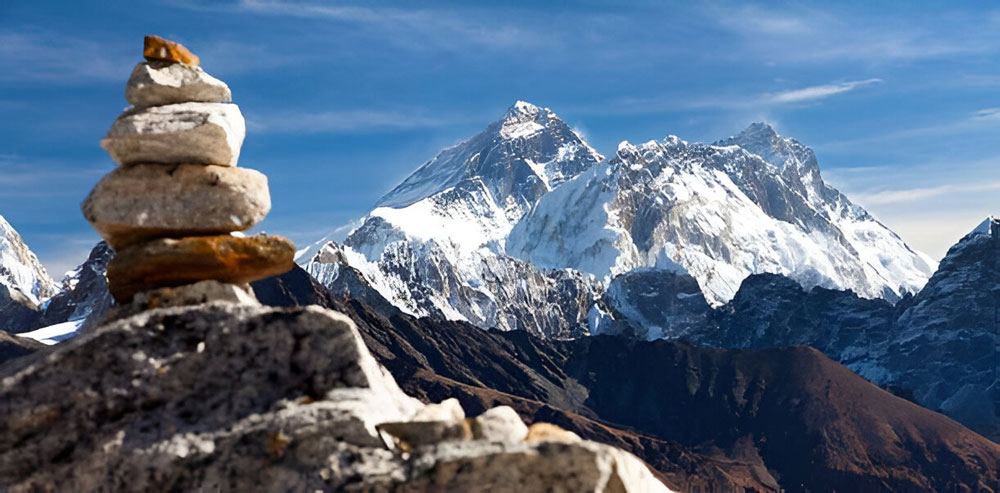
Preparing for Your Climb: Essential Tips
Proper preparation is a must for a successful trek in Nepal's peaks.
It's not just about being fit. You need the right gear. You must also know how to acclimatize.
Preparation for your first Climb in the best way can help you tackle challenges in the Himalayas.
Start with cardiovascular exercises like running, cycling, and hiking. You can start exercising 4-6 months before your trip to build endurance.
Build leg and core strength through regular strength training to manage the climb's physical demands.
Train by carrying a backpack similar in weight to what you’ll use during the trek to get accustomed to the load.
Ensure you have basic equipment like trekking boots, warm clothing, a sleeping bag, and a sturdy backpack.
Rent or bring specialized gear such as crampons, an ice axe, a harness, and a helmet for higher-altitude climbs.
Dress in layers to adjust to varying temperatures, and pack essentials like sunglasses, sunscreen, a hat, gloves, and a headlamp.
Gradually ascend, gaining no more than 300-500 meters per day above 3,000 meters, and include rest days in your plan.
Stay hydrated by drinking plenty of water. Try avoiding alcohol and caffeine during and before your journey.
Monitor your body for altitude sickness symptoms like headaches or dizziness. Descend if symptoms worsen.
What to Expect During Your Climb
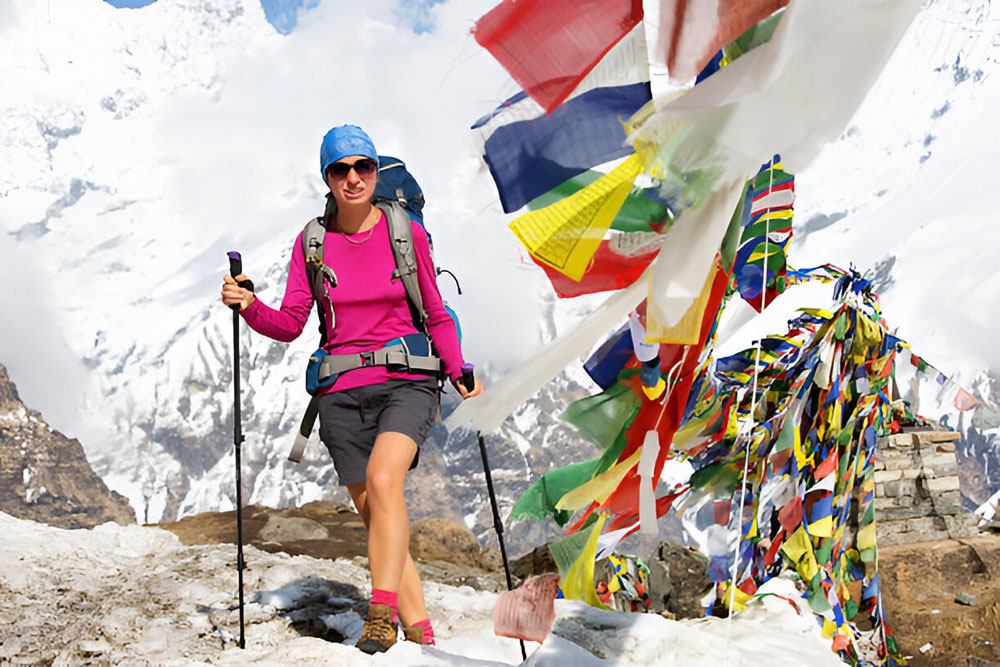
Embarking on a journey of the trekking peaks of Nepal is a journey filled with physical challenges.
However, you will have cultural encounters and the ultimate reward of standing atop a Himalayan summit.
Understanding what to expect during your climb is also a part of your preparation. It will help you prepare mentally and physically for the adventure that lies ahead.
The Climb: Day-to-Day Journey
Your trek typically involves 4-6 hours of hiking each day, with longer days during the summit push.
Mornings often start early, around sunrise, to take advantage of favorable weather conditions. The day is spent trekking through varied terrains, with breaks for meals and rest.
Evenings are usually spent at teahouses or in tents, where you'll rest and prepare for the next day's trek.
On summit day, you'll start before dawn, aiming to reach the peak by mid-morning. This is the most challenging part, as you’ll trek in the dark, braving cold temperatures and low oxygen levels.
Despite the difficulty, the reward of reaching the summit makes every effort worthwhile.
Cultural Experiences Along the Way
For the unique aspect of trekking peaks, Nepal offers the chance to immerse yourself in the rich local culture.
In Gurung and Sherpa villages, you'll meet locals. You'll learn about their traditional way of life.
You can visit ancient monasteries and share meals with your guides and fellow trekkers. Experiences like these will add a historical, and cultural dimension to your adventure.
Local guides and porters are often from the mountain regions themselves. They will share stories and insights about their culture and the mountains. These experiences will deepen your connection to the land and its people.
Reaching the Summit: The Moment of Achievement
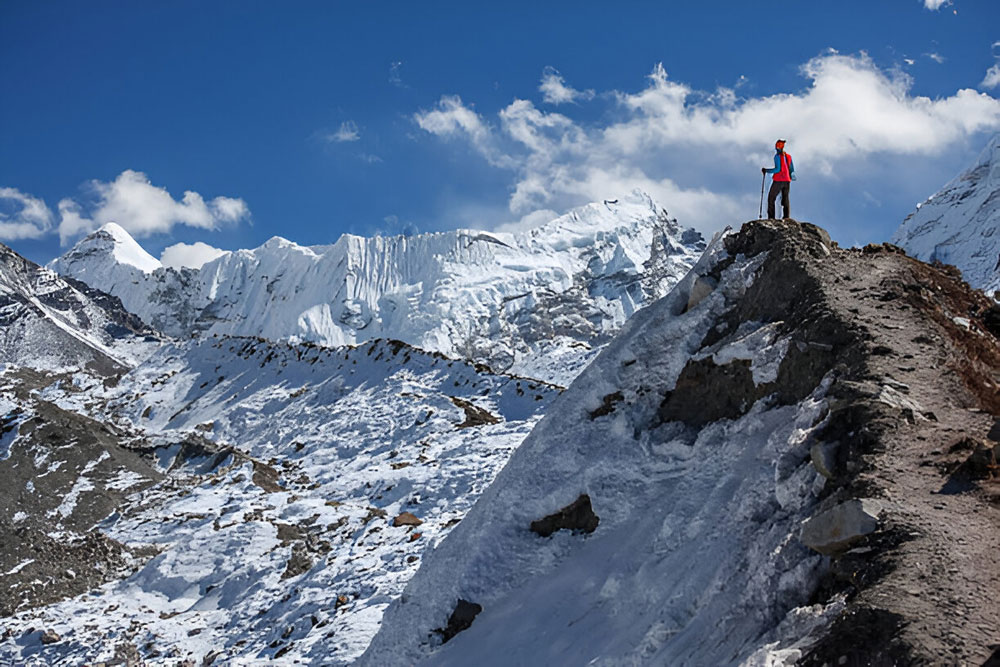
Reaching the summit is the goal of days of hard work, and grit. Atop the mountain, surrounded by the Himalayas, you'll feel a rush of achievement.
The moment, after battling the climb's challenges, is a deep reward. It stays with you long after you've descended.
How to Book Your Beginner Peak Climbing Adventure
Booking your first peak climbing adventure in Nepal could be challenging. This requires careful research and planning to ensure a safe and enjoyable experience.
Begin by researching packages that match your needs. We, Himalayan Scenery Treks and Expedition, offer beginner-friendly packages. Additionally, we are associated with the Nepal Mountaineering Association (NMA). Also, our packages include permits, accommodations, and the services of experienced local guides and porters.
When choosing, consider the support level, including the guide-to-climber ratio and accommodation quality where we are the best.
Also, review the terms and conditions to understand what’s included and any additional costs. Once satisfied, book your adventure and prepare for an unforgettable journey with Himalayan Scenery Treks and Expedition.
Conclusion
Trekking peaks in Nepal let beginners experience mountaineering in the Himalayas. Here you can experience some of the world's most stunning landscapes.
Climbing a trekking peak is a wonderful journey and a great achievement. It offers stunning Himalayan views and rich cultural experiences.
You can climb Nepal trekking peaks as a beginner, with proper preparation and expert guidance provided by Himalayan Scenery Treks and Expedition.

